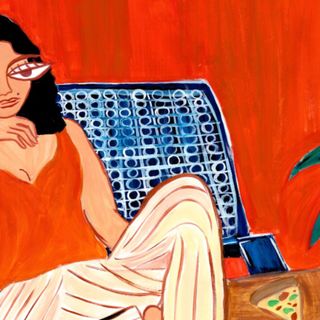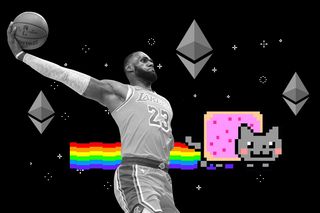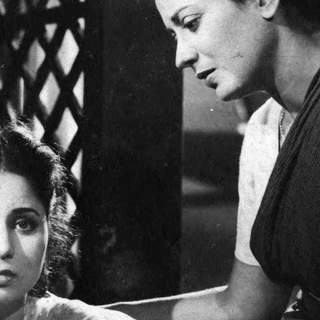
From Cat Memes to LeBron James’s Dunks, NFT Art Is Selling At Record Prices. But What Is It?
Non-fungible tokens, mostly bought with cryptocurrency, are making waves in the art establishment.

There are a lot of things you can buy with $69.3 million (roughly 500 crores): a group of islands, an Oscar, the actual Terminator. Someone across the Atlantic chose to spend all of it on a JPG image, freely available on the internet. To be fair, the image is a collage created by American artist Mike Winkelmann, or Beeple as people know him virtually, of digital snapshots he took daily for the last 14 years, for a total of 5,000 days straight. At the time of creation, he pegged its value at $100 — the appeal of his digital work has since taken a life of its own and defied this estimate.
Welcome to the bizarre, trending realm of non-fungible tokens — or NFTs, which have the art and finance world mystified. NFT is a sub-culture in cryptocurrency (digital currency based on blockchain) that allows someone to claim ownership of digital artwork. The trend of NFT art itself isn’t new: it has been circling since 2014, picked up steam in 2017, and then resurfaced again last month. NFTs allow digital ownership of anything deemed artistic — people have purchased a publicly available 10-second video clip for $6.6 million, one of a LeBron James slam dunk for $200,000, Jack Dorsey’s first tweet, Rick & Morty images for $2.3 million. The Nyan Cat gif, which has been in public circulation for decades now, ended up selling for $600,000.
“At its simplest, an NFT artwork is made up of two things,” J. Ennis, professor at University College Dublin, ventures an explanation in The Wire. “First, a piece of art, usually digital, but sometimes physical. Second, there is a digital token representing the art, also created by the artist.”
A ‘token’ is a unit of currency on the blockchain. Think of it as a code that is assigned to individual objects, and can be transferred and exchanged to mark a transaction. Most tokens are fungible, in that they are replaceable by another of their kind. A non-fungible token, by contrast, is one that is unique in its composition and cannot be exchanged for another thing of equal value. A non-fungible token gives someone a means of verification to prove they own the “original” work — its value rests its being one of its kind.
NFTs are traded using cryptocurrency, usually Ethereum, a cheaper alternative to Bitcoin. “The actual NFT-based artwork is just a code. It doesn’t exist. It has no objecthood,” art specialist Noah Davis says to Hyperallergic. It is the code that is assigned to an NFT art that is being sold and purchased, transferring ownership of the crypto art. For instance, the Nyan Cat gif that sold for thousands is a version by creator Chris Torres, and carries a unique code that gives its buyer the right to say they own the exact copy Torres sold in an auction (and is thus different from the many people on the internet might use).
Related on The Swaddle:
Banksy Trolled The Art World And It Was Amazing
All of this raises the question: why buy something at an exorbitant cost that anyone can download from the internet? The answer has NFT enthusiasts and the art community divided.
One reason is the desire to own something certifiably authentic. As with all collectibles — books, vinyl, coins — there’s an irreplicable vintage to owning something one-of-a-kind. The novelty and rarity of NFTs play to the desires of enthusiasts, who are tempted to put a price tag on the priceless. But critics who are wary of NFT art caution that it can fuel an obsession with ‘certified authenticity,’ where people end up buying NFT art only for bragging rights and not for the artistic value itself. The hype around NFT art “isn’t necessarily revolutionizing art, the collectibles industry or the concept of property,” Leonid Bershidsky argues in Bloomberg.
In some ways, NFT art inspires confidence in the buyer — information and authenticity of the work their purchase is available and verifiable. Moreover, sellers can protect their work from forgery and duplication. Some NFTs also contain smart contracts that may give the artist a portion of any future sale of the token, allowing them to profit off of it. The NFT assures the buyer that the artwork is genuine and grants the creator indisputable ownership. But as demand surges, there have been cases of duping and selling fakes NFTs — NFT resembling artist Banksy’s paintings, which raked over $900,000, recently turned out to be fake.
NFT art also carries an appeal for crypto enthusiasts: they view NFTs as a way to revolutionize the financial marketplace, where cryptocurrency and blockchain could be the norm. Buying and selling on NFT can make people comfortable with cryptocurrency, which could normalize the use of blockchains. (Blockchains were introduced in 2011 as digital ledgers in real-time, accessible to a large open network that anyone can add to.) Their popularity has been ascribed to affordability, transparency, and democratic use — but blockchains and cryptocurrency still struggle to enter the mainstream. The popularization of NFTs, Natasha Mascarenhas argues in Tech Crunch, can make cryptocurrency “finally palpable to the average human — besides the average bitcoin hoarder.”
Related on The Swaddle:
The Buzz Cut: Grimes Is Selling Her Soul For Her Art, Literally
Why the boom now — considering the concept of NFTs has existed for some time now? Experts ascribe this growing interest to the rise of cryptocurrency and artists warming up to the idea of blockchain. Artist Grimes made $6 million from selling her digital art; the band Kings of Leon released their latest album as an NFT in early March — both started a domino effect of sorts. The appeal is evident within India too — EDM artist Nucleya is planning a similar NFT launch; digital artist Amrit Pal Singh recently sold his work (toy faces of actors) for over Rs 20 lakh.
Social media has further contributed to the NFT mania. “The crypto world produces, lives, breathes, monetizes hype,” Bershidsky says. “It’s using radically creative ways to involve the non-crypto world in this process, and it’s spreading around plenty of money.” So even if one is not looking to buy or create NFTs, chances are their impact will be pervasive.
While the interest in NFTs and their future may draw divisive opinions, there seems to be a consensus on one thing: the idea of crypto art is swiftly entering the mainstream, even if briefly. NFTs have earned the tag of the new art craze for a reason, anything could have cultural capital, anyone could sell an NFT art. The degree of relevance NFTs may hold in the future hinges closely on how the world of cryptocurrency is, and will be, perceived. Professor Ennis in his article notes, “To see the value in NFTs, we have to look past the art itself and at the blockchain.” The big picture has our attention.
Saumya Kalia is an Associate Editor at The Swaddle. Her journalism and writing explore issues of social justice, digital sub-cultures, media ecosystem, literature, and memory as they cut across socio-cultural periods. You can reach her at @Saumya_Kalia.
Related


Woe Is Me! “My Husband’s Family Expects Us To Pay All Their Bills. Are We Wrong to Refuse?”
